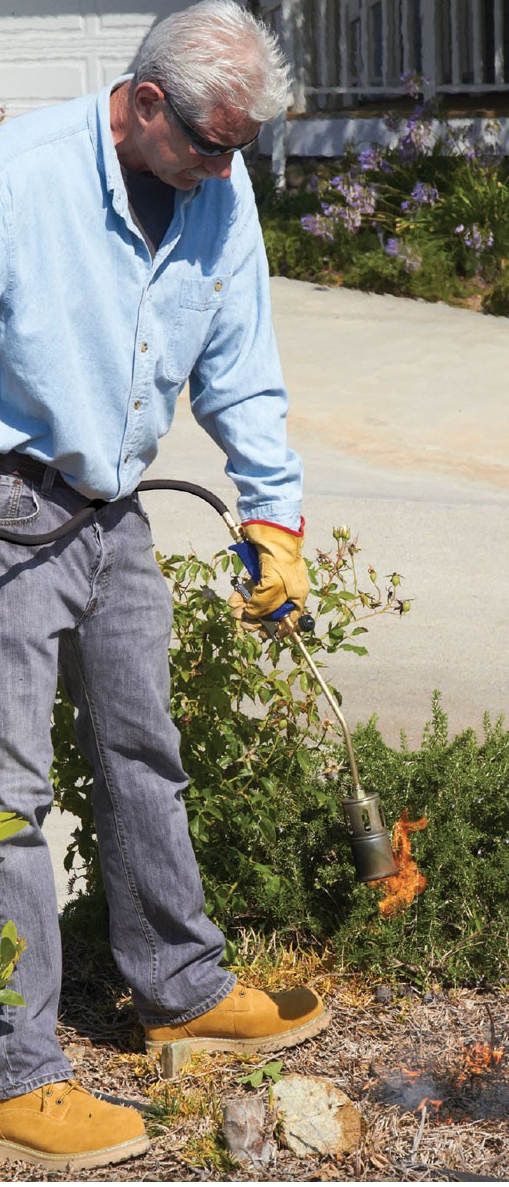Advice for the Home Gardener from the Help Desk of the
UC Master Gardener Program of Contra Costa County
Client's Request: As we discussed on the phone this morning, I have recently installed extensive drought-resistant landscaping. I have also added wood chip mulch to prevent weeds. However, I'm concerned about how to maintain it weed-free as well as other areas in my garden. Our phone discussion covered many of the usual techniques to prevent weeds in this situation. You said that you would do some further review and possibly provide me with some more options.
UC MGCC Help Desk Response: Thank you for contacting the UC Master Gardener Program Help Desk with your questions about weed control in your new landscape.
The first option is to put down a weed fabric (not plastic) on the edges of your landscaping to control the small, sneaky weeds that appear where the wood mulch tends to be thin. Once the fabric is installed, you can cover it back up with your wood mulch. This will stop the weeds from coming up on the edges of your pathways.
Another option we didn't discuss is using a weed flamer. Flamers require no chemicals, and don't result in groundwater contamination or chemical residues on garden. One plus for weed flamers is that they are usually considered an organic gardening method. For effective weed control, you can use flamers in spring and early summer as annual and perennial weeds emerge. Killing larger, mature plants requires more heat, so save time and fuel by flaming weeds when they're still young and tender. This is a good option for larger areas that need treatment.
You can Google ‘weed flamer' for local and online suppliers as well as additional safety guidance. The idea of weed flamers isn't to burn the plants, but to quickly pass over to apply the right amount of heat to cause the water in the weed cells to boil, causing the plant to atrophy and die. Torch remaining weeds once every two to three weeks in ongoing applications or as needed until the next frost. Flaming kills annual weeds completely but does not completely eradicate the roots of perennial weeds.
If you do decide to use a flamer, be sure to keep a water supply handy, and do not get the flame near anything flammable, especially your dry wood mulch back, for safety purposes. To be safe, you may need to pull the mulch back before using the flamer or drench the mulch first with water.
Here is a link to more (and extensive) information on weed control in your garden:
http://www.ipm.ucdavis.edu/PMG/PESTNOTES/pn7441.html
Please don't hesitate to give us a call if you have additional questions!
Help Desk of the UC Master Gardener Program of Contra Costa County (SLH)
Note: The UC Master Gardeners Program of Contra Costa's Help Desk is available year-round to answer your gardening questions. Except for a few holidays, we're open every week, Monday through Thursday for walk-ins from 9:00 am to Noon at 75 Santa Barbara Road, 2d Floor, Pleasant Hill, CA 94523. We can also be reached via telephone: (925) 646-6586, email: ccmg@ucanr.edu, or on the web at http://ccmg.ucanr.edu/Ask_Us/ MGCC Blogs can be found at http://ccmg.ucanr.edu/HortCoCo/ You can also subscribe to the Blog (http://ucanr.edu/blogs/CCMGBlog/).

